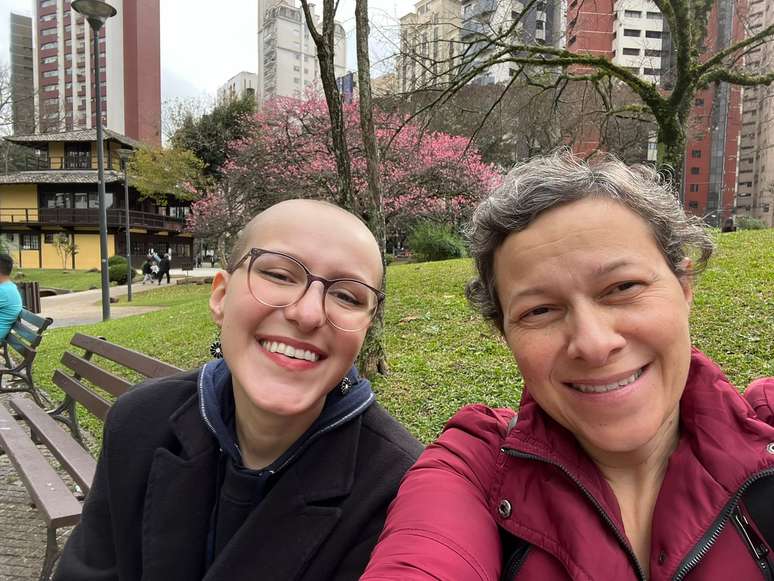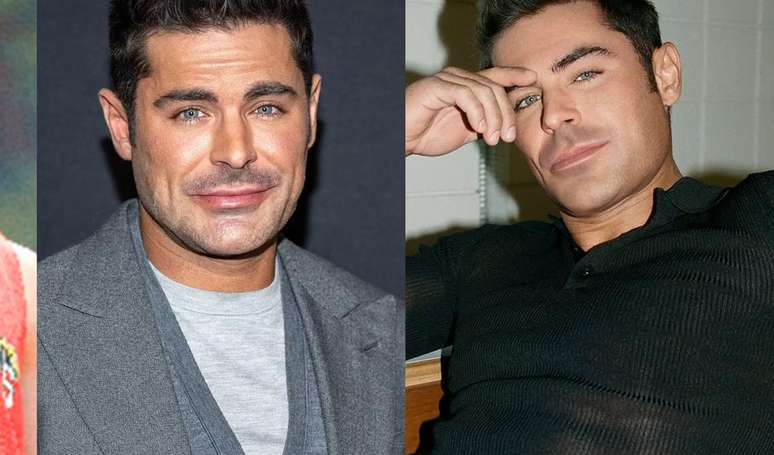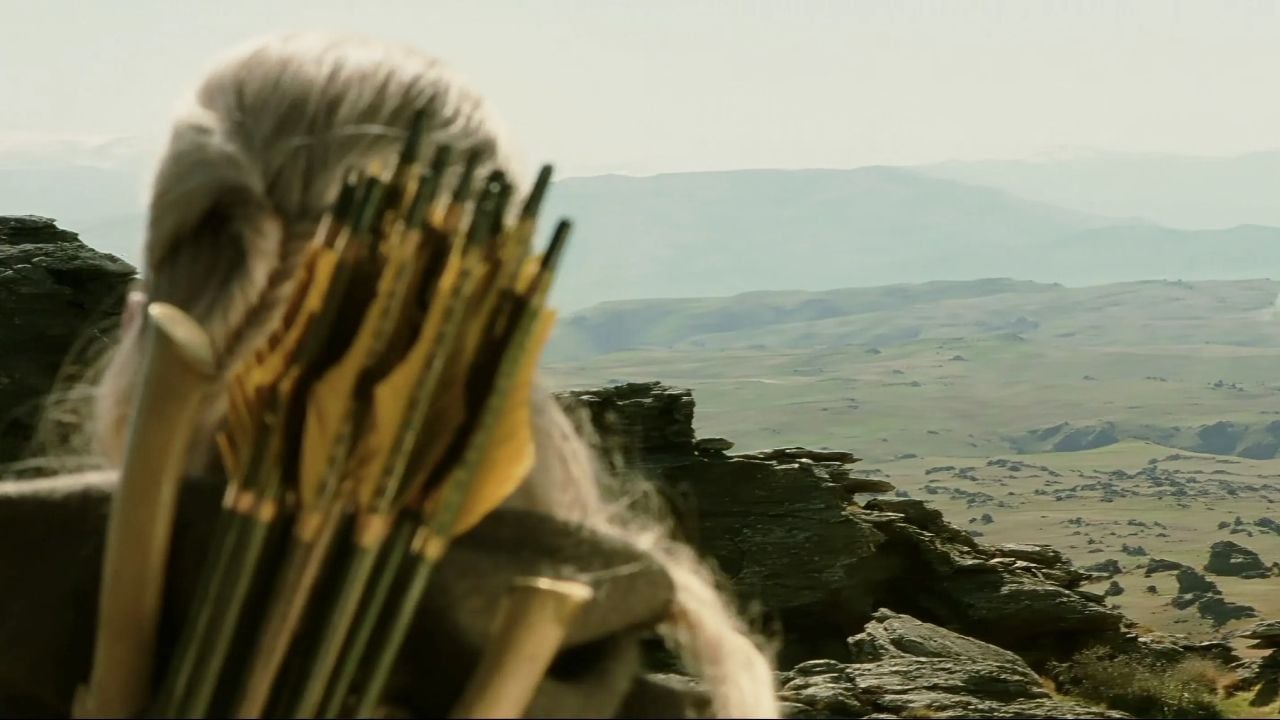Helena Colino was diagnosed with the disease at age 23 and began chemotherapy the day after her mother, Letícia, finished radiotherapy
Summary
Mother and daughter, who were diagnosed with breast cancer 10 months apart, went through treatment together, overcame the disease and are now in remission, underlining the importance of early diagnosis and prevention.
At the age of 23, while following her mother’s treatment for breast cancer, young Helena Colino was surprised by the results of her tests: she was diagnosed with the same disease. “We were in a victorious mood, we were finishing my mother’s treatment and we couldn’t celebrate. Then came this hard blow. I had breast cancer too,” recalls Helena, now 26.
Receive the main news directly on WhatsApp! Subscribe to the Terra channel
This part of their life story began in 2023. First came the diagnosis of their mother, teacher Letícia Colino, 48 years old, resident in São José dos Pinhais, in Paraná. At the time, at age 46, she says she started feeling a lump during a self-examination, but initially thought it was due to the plastic surgery she had undergone. After noticing that the nodule had increased in size and undergoing an annual checkup earlier that year, he discovered a luminal B tumor measuring more than 5 cm.
“At that moment I lost my mind. I didn’t want to tell Helena right away, I only told her after a while, because it was very painful, I didn’t want her to suffer. I was bearing it alone, it’s a terrible phase. I say that the diagnosis phase is even worse than the treatment, it’s a huge hole, because you have hope that it could be something else. It was very difficult”, explains Letícia in an interview with Earth.
With the diagnosis in hand, the teacher began treatment in March: she underwent several sessions of chemotherapy, complementary tests, radiotherapy, underwent a bilateral mastectomy – surgery to remove the breast – and continues to this day with hormone therapy.
Elena’s diagnosis
During the trial, Letícia also asked to undergo a genetic test and the result confirmed a mutation (BRCA2) associated with the onset of cancer. It was at that time that the daughter, Helena, received instructions from the mastologist to undergo follow-up tests.
Helena recalls that the ultrasound detected some cysts, but this did not worry her. “I thought it wasn’t until I was around 40 that I should worry about this. I was absolutely sure this didn’t happen to people my age,” he says.
But in January 2024, she underwent an MRI and a biopsy and the result was a 5cm tumor in her left breast, stage 3, when the tumor grows and may have spread to nearby tissue.
“I didn’t have any symptoms. I followed my mother’s entire treatment, we lived in the same house without knowing that they both had cancer. I didn’t have a lump that I could feel, I didn’t have any pain or discomfort,” says the young woman.
The only indication she had was the inverted nipple. “I thought it was just a cosmetic imperfection.” However, Helena later discovered that this was also a warning sign: since the tumor was located right behind the nipple, it caused the central structure of the breast to retract.
“I remember when the results came out I went back several times to see if it was really my name. I couldn’t believe it. I thought they had changed the test. At my age I had never heard a story like that.”
-t4q6j80kkgty.jpg)
From initial shock to treatment
The start of Helena’s treatment was also very memorable for mother and daughter. On January 17, 2024, Letícia had her last radiotherapy and, the following day, her daughter started chemotherapy.
“It was very sad. I couldn’t even think about my treatment, I could only think about what he would experience. When the last day came, which was the day I would ring the bell of the Erasto Gaertner hospital [ao final do tratamento oncológico, os pacientes tocam um sino para simbolizar o final de uma etapa no hospital referência em Curitiba (PR)]I said I didn’t want to, that I would wait for my daughter to finish her treatment and we could play together. And that’s what happened,” says Letícia.
Helena underwent a treatment similar to that of her mother and, after a few months, diagnostic imaging tests confirmed that the tumor no longer existed and that part of the battle had been won. “My mother’s has shrunk in size. But mine has completely disappeared.”
“When we rang the doorbell together on September 30th [do ano passado]it was very exciting. It was very festive, we even said that we never stopped celebrating. Every day is a celebration, every day is the most beautiful day in the world”, celebrates Helena.
Currently, both are in the remission phase of their cancer – when tests detect no signs of the disease; remission can be partial or complete and are subjected to constant monitoring by doctors.
-qhqltb5y7ygi.jpg)
Fully documented process
During Helena’s treatment, the young woman, who was in her final year of Design at college, had the idea to document the entire process and present the material as a Course Completion Work (TCC).
“In my final year of university, I decided that I would make a documentary, but it was about a different topic. But, when I got the diagnosis, it was one of the first things I thought about. I would record what I felt, things that people need to see. It explained some things in simple terms, like what chemotherapy is, how it differs from radiotherapy,” he explains.
On October 29, his documentary, entitled There is no harm that lasts a hundred years, will be screened for free on Mindhub – Innovation Hub, in the capital of Paraná, as part of the Pink October program, month of awareness of breast cancer, one of the tumors that most affects women in Brazil and in the world
Mother and daughter also stress the importance of prevention and early diagnosis, as well as undergoing genetic testing. “Everything changes. Cancer is time. If I had discovered it a little earlier, perhaps I would have undergone a lighter treatment. The sooner we find out, the better,” says Letícia. “And of course the chances of survival are much greater if you receive an early diagnosis,” adds Helena.
Source: Terra
Ben Stock is a lifestyle journalist and author at Gossipify. He writes about topics such as health, wellness, travel, food and home decor. He provides practical advice and inspiration to improve well-being, keeps readers up to date with latest lifestyle news and trends, known for his engaging writing style, in-depth analysis and unique perspectives.





![Un Si Grand Soleil Preview: Episode Summary for Monday, October 20, 2025 [SPOILERS] Un Si Grand Soleil Preview: Episode Summary for Monday, October 20, 2025 [SPOILERS]](https://fr.web.img4.acsta.net/img/24/61/24614f00035a1444d216245e9a9c963f.jpg)


